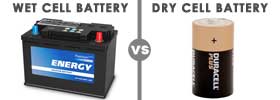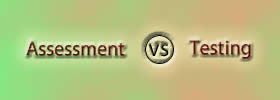Difference between Analog and Digital Phone
Key difference: An analog phone interprets sound as an electronic pulse. Hence, the sound is converted into electronic signals. The electronic pulse is analogous to the sound being interpreted. The signal is then transferred over copper wires in the form of waves. A digital phone, on the other hand, first converts data into a binary code, i.e. 1s and 0s. This is the same way in which computers store information.
 A phone or telephone is a telecommunications device. It converts sound into electronic signals and sends the data over long distances. The data is then converted back into sound. This allows two people over long distances to talk to each other. The data is transmitted via cables or other transmission media.
A phone or telephone is a telecommunications device. It converts sound into electronic signals and sends the data over long distances. The data is then converted back into sound. This allows two people over long distances to talk to each other. The data is transmitted via cables or other transmission media.
There are two main ways that data can be transmitted. The manner in which the data is transmitted tells us whether the phone is an analog phone or a digital phone.
An analog phone interprets sound as an electronic pulse. Hence, the sound is converted into electronic signals. The electronic pulse is analogous to the sound being interpreted. The term, analog is derived from this. The signal is then transferred over copper wires in the form of waves. Another way of saying this is in terms of small fluctuations in the signal which are meaningful.
A digital phone, on the other hand, first converts data into a binary code, i.e. 1s and 0s. This is the same way in which computers store information. The data in the form of 1s and 0s is then transmitted where it is restructured into a representation of the sound, on the other end. VOIP (voice over Internet protocol) is a type of digital signal.
An analog phone was previously the most commonly used technology for phones. However, this has been changing constantly over the recent years. This is mainly due to the various advantages of digital over analog.
Firstly, digital signals take up less space than analog signals. Hence, more information can be sent in the same space capacity. Also, due to this the signal is much clearer and has a greater range than analog signals. Moreover, digital signals are easier to encrypt in order to keep others from eavesdropping on the conversations.
Furthermore, a digital signal uses discrete i.e. discontinuous values. Hence, the information represented can be either discrete, such as numbers or letters, or continuous, such as sounds, images, and other measurements of continuous systems. This is why a digital signal is preferred for video conferences. Digital technology has also been utilized in the cellular phone industry.

In order to differentiate analog from digital, especially for a lay person, is to check the back of the phone. Analog phones should have the phrase "complies with part 68, FCC Rules" on the back of the phone. They will also have a Ringer Equivalence Number on the back.
Also, digital phones tend to have many more functions available, and are hence usually used in a corporate office or a business environment. This is where all the phones are connected to an internal switchboard with each phone having an extension number. In order to connect to a number outside the switchboard, the number ‘9’ or a specific code must be entered first.
If you look at the digital phones in these offices, they tend to have anywhere between 12-40 buttons, with red lights blinking all over. Analog phones, on the other hand, usually tend to have the standard number pad and sometimes may have a few other keys.
Digital phones also tend to have programming keys, speakerphone and caller ID. However, these days even analog phone may have speakerphone and caller ID. These are cordless phones, which incorporate both digital and analog technology. The wireless handset uses digital technology to connect to the base, which in turn uses analog technology to transmit sound.
Hence, it is safe to assume that the phone that most of us use at home is an analog phone.
Image Courtesy: cablingservicescorp.com, telephonemagic.com









Add new comment